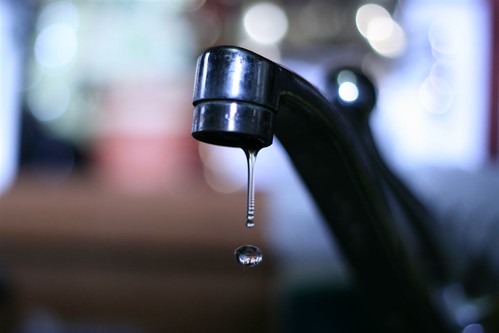Your kitchen is the place where you and your family make memories, cook delicious meals and start traditions. It is not where you want to find harmful, illness-inducing mold. It can contaminate your food and make your family very sick. This is the last place you want mold to grow and spread. The scary part is, you may smell a musty odor, but not see anything that indicates mold.
How Did It Get Here?

Mold is bacteria that thrives on moisture and humidity. Our kitchens are hot spots for both due to varying temperatures when you cook and from the plumbing for sinks and refrigerators. As it grows, mold releases toxins into the air, which we breathe into our lungs, and contaminates the surfaces we eat off of. This is a primary danger of mold, it sometimes cannot be seen but it still affecting the areas around it. It is imperative to frequently look under your sink, and other places with plumbing, to check for leaks. This could help prevent a large-scale mold outbreak.
How Do I Get Rid of It?
- Bleach Mixture: (It is recommended to wear eye, mouth, and hand protection.) Mix 1 cup of bleach with 1 gallon of hot water. Once the mixture is mixed, pour some into a small spray bottle. Clear the area of any objects not in contact with the mold, or that could be ruined by the bleach. Open windows or doors around the area to ventilate as you do not want to inhale the bleach mixture. Spray the affected areas well with the mixture and let sit for at least 5 minutes. With a stiff-bristled brush, scrub the moldy areas. Repeat as many times as necessary to rid the whole area of mold. Dry the area very well after finishing the process.
- Commercial Mold Removing Products: Products specifically targeting mold are widely available at local home supply stores and hardware stores. There are ones that are billed as natural and safe for use even in a refrigerator. However, many utilize stronger chemicals or components that must be sprayed directly onto the affected area and cleaned promptly. As with the bleach mixture, make sure you have windows open to circulate the air and reduce the chance of inhaling chemicals.
- Professional Help: If you are having trouble removing the mold with any of these methods, you have a large area that has been affected, or you just don’t feel comfortable getting rid of it yourself, call a professional. A professional can identify the source of the mold, remove it and put steps in place for prevention. This would be the best route to ensure full and complete removal.
Before you decide how to get rid of your mold issue, make sure it is achievable and safe for you and your family. If you do it yourself, make sure to find out the source of the mold and get rid of it before you clean up. While small mold issues can be easily taken care of, anything larger may dictate a call to a mold specialist.
